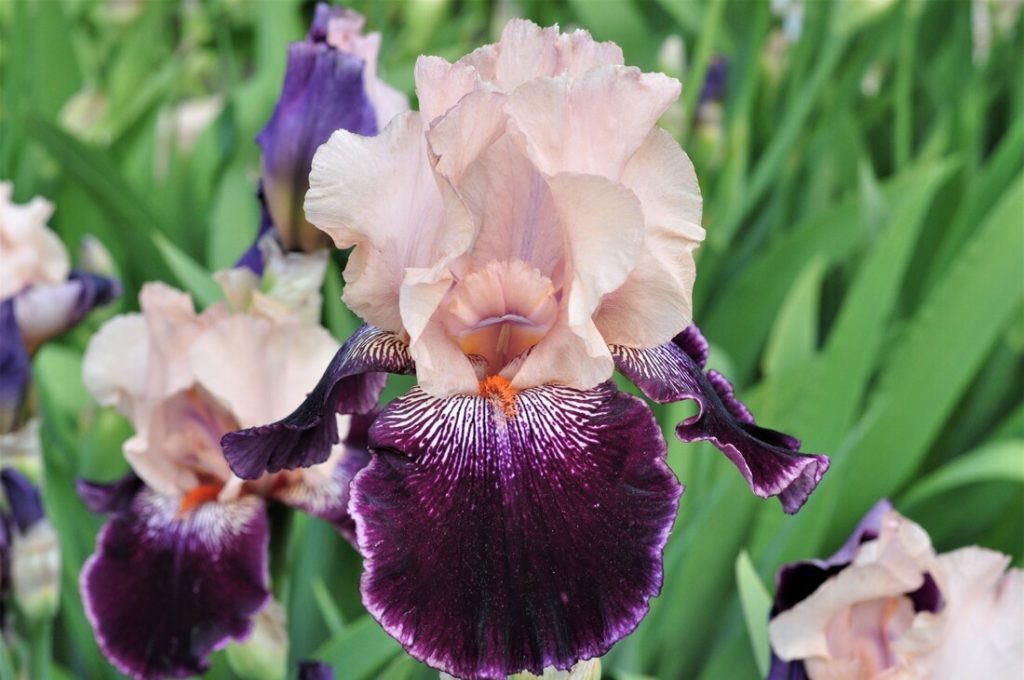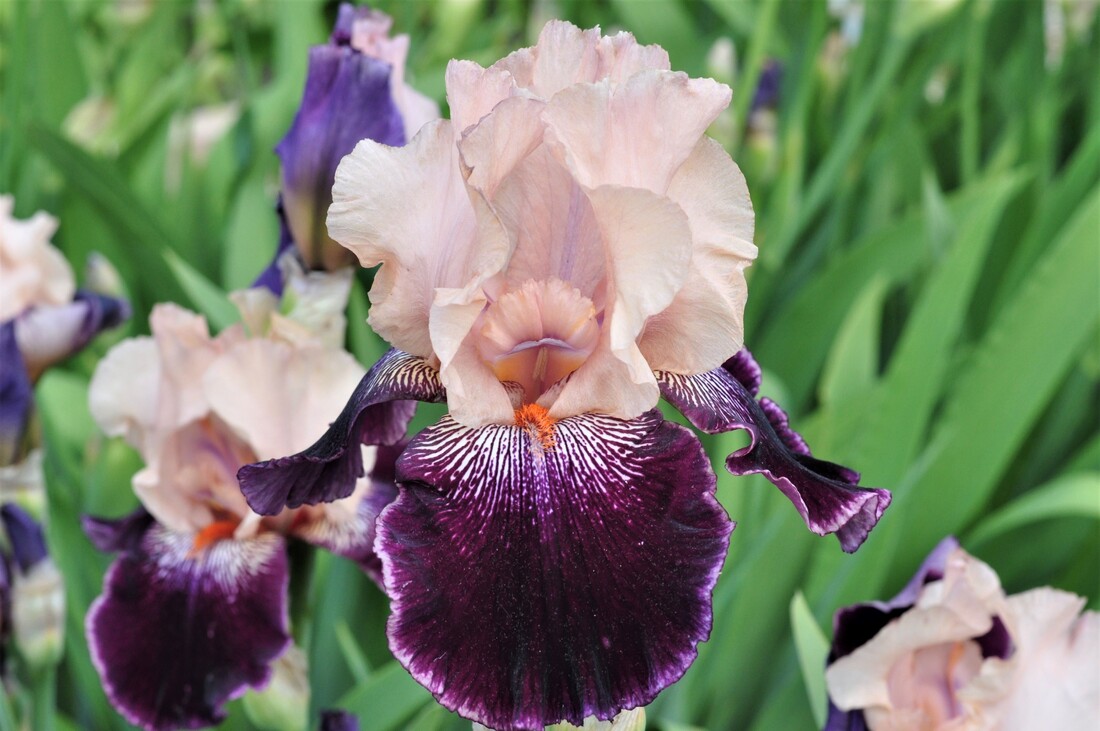The Magic of the Night Garden
By Christine March, Master Gardener, March 25, 2025
While you are tucked into your bed, dreaming the night away, the night shift is working its magic in your garden. Who are these magicians? They are the pollinators and beneficial creatures who get to work when the lights go down.
We are all familiar with the various pollinators that visit our gardens during the day, but many of us are unaware of the pollinators and creatures that do their work in the dark.
Not all nighttime pollinators are as pretty and photogenic as the daytime crew. Let’s be honest; moths, beetles and bats can’t hold a candle to butterflies, hummingbirds, and dragonflies, but their contributions are no less valuable. Like their diurnal (daytime) colleagues, these nocturnal creatures also need our support to ensure their survival.
Consider the humble and, dare I say, underappreciated moth. Ontario boasts over 3300 species of moths, many of which are important pollinators. During their nighttime nectar-foraging missions, moths collect pollen on their hairy underbellies which is then disbursed throughout the garden.
Do you consider beetles a friend or a foe in your garden? How about fireflies? Fun Fact: fireflies (Lampyridae) are members of the beetle family. Ontario boasts the largest population of fireflies in Canada with most found here in Southern Ontario. Fireflies are important nighttime visitors to our gardens. Their enchanting bioluminescence is a mating tactic used primarily by males to attract willing females. The larvae (aka “glow worms”) are ferocious predators that eat slugs, snails and earthworms. While fireflies bedazzle us with their evening light show, their cousins, the soldier beetles, are quietly feasting on aphids and pollinating flowers.
When I say the word “BAT” you might immediately think of Dracula and horror movies, but I hope you will also take a moment to appreciate how important these harmless creatures are to our natural world. These apex predators help control harmful insect populations which can devastate gardens and agricultural crops. Sadly, four of the eight bat species native to Ontario are endangered. Bat populations have been decimated by habitat loss and the fungal disease White Nose Syndrome.
All pollinators are essential to human survival and most are under threat. So what can we, as home gardeners, do?
Canadian author Lorraine Johnson has written several books on ecological gardening and is a vocal advocate for all pollinators. In her writings, Lorraine highlights several actions we can take to protect beneficial insect and animal populations, one of which is to reduce ALAN.
If you’re not familiar with ALAN, you’re not alone. ALAN is an acronym that stands for Artificial Light At Night. These light sources can confuse insects and animals, disrupt their mating and foraging instincts, and ultimately reduce their populations. If you have exterior lights on a fixed timer, consider switching to a motion-activated system.
Another step we can take is to plant more night-blooming plants. Night bloomers use a couple of tricks to attract pollinators. The first is fragrance which draws pollinators to their sweet nectar. The second is their light colouring which reflects moonlight and makes the flowers easier to find. Two to consider are the common Evening Primrose (oenothera biennis) and the appropriately named Moonflower (Ipomea alba).
A third idea is to install bat houses. Bats only produce one pup (baby) per year. Backyard bat houses can help support species’ survival by compensating for habitat loss. The Canadian Wildlife Federation website offers many helpful tips to help you with your DIY bat house project.
CONSIDER THIS:
We can help these beneficial creatures by planting pollinator-friendly night-blooming plants, reducing artificial lighting, or installing a bat house. And we can rest easy knowing we are doing our best to help support the magic of the night garden.
This series of gardening articles is brought to you by the Simcoe County Master Gardeners, members of the Master Gardeners of Ontario. For more information visit www.simcoecountymg.ca

Why did the Turtle Cross the Road?
Friends of Wye Marsh says Turtle Nesting Season is No Joke and Invites You to do Your Part to Help.
By Eric Walter June 16, 2025
If you live, walk, drive, or ride by the water, it’s likely that you’ve noticed small holes or disturbed patches of dirt and sand recently. You may have even noticed a turtle or two venturing to places you normally don’t see them. And if you’re really lucky, you may have even caught a glimpse of one of the season’s most exciting Phenomena – a turtle laying its eggs. And as tempting as it may be to intervene with a turtle that you feel has ventured far from home, chances are that it is just finding the perfect place to lay its eggs before returning back to the water.
This important annual ritual is on full display across the region, and is perhaps nowhere as prominent than at the Wye Marsh Wildlife Centre, where on any given morning during these important few weeks you may encounter close to a dozen turtles preparing their nests or quickly sliding back into the water after laying their eggs. Turtle nesting season is at its peak this time of year, and both staff and volunteers of Friends of Wye Marsh, the local non-profit which manages and maintains the wildlife area, are busy at work educating the public and protecting nests where they can.
Eric Walter, Executive Director at the Wye Marsh, says the public is encouraged to come witness the nesting process first-hand, but to do it responsibly. “The Wye Marsh is a truly unique place this time of year, where over the course of an hour you may see a handful of turtles in the act of building nest and laying eggs. We love having visitors here to experience this part of nature, and to do it in a way that respects each animal’s need for space.”
Of the hundreds of nests that are expected to appear on Wye Marsh trails over the next few weeks, only a handful will survive the 2-4 months it will take the eggs to incubate. For their part, staff and volunteers are doing their part to give each nest a fighting chance. Miriam Robitaille and Kaden Crowe, Environmental Technicians working at the Wye Marsh this summer, have helped to coordinate that effort.
“Turtles lay a high volume of eggs, but predation rate is also very high. There are a lot of predators looking for food and these eggs are a part of that food chain”, they share. “We’ve assembled and deployed dozens of nest protectors to reduce predation and help to balance the food web.”
All eight species of turtles in Ontario are designated as species at risk, with potential fines stemming from tampering with a turtle nest or impeding a turtle from its ability to lay eggs. While the Wye Marsh is likely the best place in town to witness this important part of nature, there are steps you can take to help turtles thrive the next time you see one looking out of place in the community.
According to staff the best thing you can do is as little as necessary. “If you see a turtle laying eggs in the wild, the best thing to do is give her lots of space! If a turtle is crossing a road or seems to be somewhere you don’t expect them to be, trust that they know what they are doing, and only consider guiding them across roadways if they are in immediate danger.”
For a chance to safely and responsibly view turtles and their nests, and view other wildlife, the Wye Marsh can be visited 7 days a week from 9am-5pm, or during a special sunset paddle on Friday evenings at 7:30pm, which is followed by warm drinks and snacks around the campfire. The entire Wye Marsh Wildlife Area is managed by Friends of Wye Marsh, a local non-profit which does not receive ongoing government funding. To learn more, or donate, visit www.wyemarsh.com.


